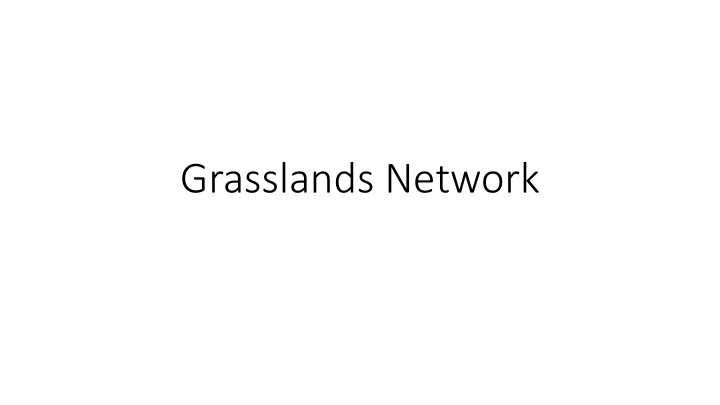



Grasslands Network
Impact on net GHG balance (CH4, N2O, SOC) of different grassland management practises and processes • Biological (plant and soil) nitrous oxide inhibition – Japan, CIAT, gene transfer from tropical to temperate species, Di and Cameron work, plants adapted to low nitrogen conditions should have BNI, also some work in France. • Biological nitrogen fixation – data on how much N fixation – country specific – better activity data – fixation rates by species – assessment of overall N2O mitigation – review of BNF in grassland systems, emissions (including SOC links), • Fertilizer use – effect of fertilizer formulations on N2O emission, global survey from IFA, need to understand better information on rate of application, type of fertilizer, carbon footprint of manufacturing?, non-nitrogen fertilizers (P, K, S, other nutrients).
Identification and compilation of existing datasets • Long term experiments • Grassland type (monoculture, mixed) • Annual yield • Pasture characteristics • Soil properties (physical and chemical) • Carbon estimates? • Frequency of SOC determination • Animal information (grazed or not, stocking rate, production statistics) • Fertilizer and other • Impacts of CO2 and temperature on grasslands • Metaanalysis on soil, climate, net emissions
Characterisation of grasslands in global and regional climate change models • Identify data gaps and weaknesses of models: • Animal, plant, soil interaction well characterised? • Link this to dataset acquisition (e.g. previous slide). • Coupling models? To simulate plant and animal interactions. • RUMINANT model evaluation taking place now (CIAT – talk to Jacobo for more information).
Technologies and practices in grasslands to improve forage quality and availability • Assessment of the ‘trade-offs’ that might actually occur or might be achieved among different ecosystem services (i.e. grass productivity, forage quality, soil C sequestration, soil nutrient and water regulation etc.) under different management practices and across different livestock production systems. • Research to show the benefits or the limits of grassland/rangeland management for delivering multiple services. How to identify or estimate trade-offs.
Research collaboration – building on existing • Horizons 2020 – “grazing for carbon” – Agnes Van der Pol (Netherlands) coordinates this focus group – will identify topics that will end up in future calls of the EU Research Area. • Incorporation of legumes in pasture – PROCISUR/FONTAGRO – 8 countries of Sth America. • Synthesis paper – people involved get something out of it. Targeted at IPCC. (could check scoping of the land sector special report for ideas). • Others?
Opportunities to network • Eurasian Grassland Conference 2017 4-11 July, Latvia. • 2018 European Grasslands Federation - Ireland. Sustainable Meat and Milk Production from Grasslands - opportunity for network meeting – 17-21 September, 2018. • Greenhouse Gas Emissions in Animal Agriculture Production Systems of Latin America – 4-6 October, 2017 – Colonia, Uruguay. • International Grassland Congress – 25-30 October, 2020 – Nairobi. • International Rangeland Congress – 2016 held in Canada, next one? • Others?
Building a network • Two network coordinators (Ireland, Uruguay + Netherlands) • Six members…..(Argentina, Ghana, UK).
Recommend
More recommend